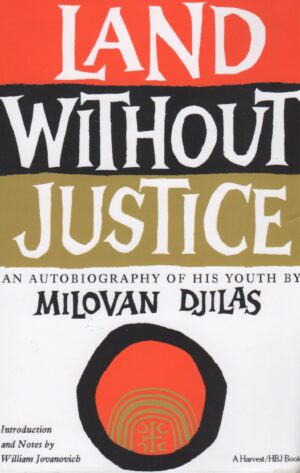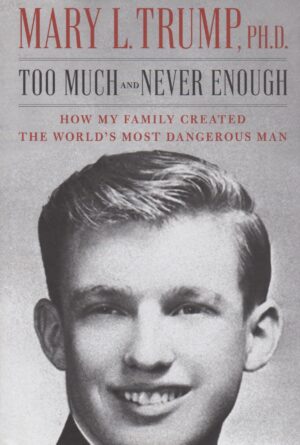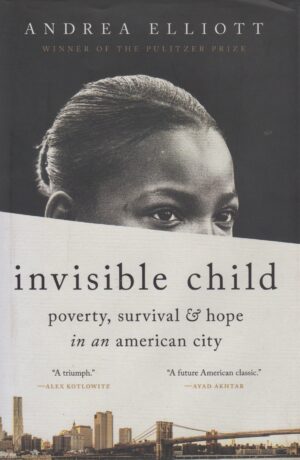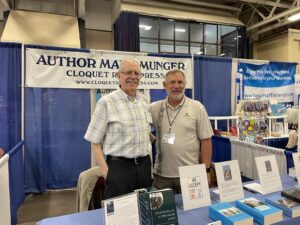
Recently, an old friend, whom I admire both for his wisdom and pragmatism, asked me to watch the documentary, The Fall of Minneapolis. After watching the first five minutes, wherein the intentions of the folks behind the film are made abundantly clear (the main premise being that the conviction of Derek Chauvin for the intentional murder of George Floyd was a sham), I emailed my friend and said, “No, I’m not going to watch the rest. I already know where it’s headed.” But my wife, a very thoughtful, retired mental health professional, convinced me I needed to watch the entire documentary to come to a judgment regarding its merit. So I did.
Before I discuss the factual and legal fallacies inherent in the film, let me raise a couple preliminary points.
I’m in the midst of reading the complete works of Dr. Martin Luther King, Jr. I have, for the better part of a year, been steeped in King’s message of nonviolent change. I’m at the point in King’s journey where he’s dealing with advocates of Black Power: younger, more strident Black men and women tired of the slow, steady, drip-drip of attaining civil rights. King watched the Watts and Detroit and other riots of the mid-60s, his people fueled by rage and anxiety and poverty and hate to destroy the cities they lived in due to frustration at the pace of racial reform. As the riots unfolded, King believed his way, the nonviolent path to racial justice in America, was in jeopardy. I write this so you understand: I don’t minimize or condone what the rioters did in Minneapolis or any other American city following Mr. Floyd’s death. Violent crimes were committed and the folks who committed those crimes should be held accountable. In addition, much of the film deals with the angst and heartache and loss and sadness and fear experienced by the Minneapolis police officers who worked out of the 3rd Precinct and were forced to retreat from their beloved station house. They were heroes, doing heroic things to try to keep order and peace in a neighborhood on fire. The officers failed in their attempt to keep the peace, not due to a lack of courage or will but due to overwhelming odds against them. There’s no shame in that and I honor their sacrifice and their service.
When I conduct historical research or in-person interviews for my books (or when I worked as a judge and attorney) I am and was cognizant of the training I received as a college student working on research assignments handed out by my history and political science professors, as well as the research protocols I learned as a law student, legal assistant, and full-time legal researcher while attending William Mitchell College of Law. In any such enterprise, the fundamental questions to be asked are:
- What is the source of any background material?; and
- What biases do the witnesses and/or the individuals (including me!) asking questions bring to an interview?
The film begins with footage of the arrest of George Floyd. Let’s remember that Mr. Floyd had not been accused of committing a violent crime. He was accused (by a shop owner) of attempting to pass a counterfeit $20 bill; a financial offense. For certain, passing/possessing a fake $20 bill can be charged as a felony. But the question I’ve never been able to answer is whether Floyd knew the bill was fake. That’s something any prosecutor charging Mr. Floyd would want to know and the answer, so far as I’m aware, died with Mr. Floyd. Given the nature of the allegation, the interaction between the suspect (Floyd) and the officers (Chauvin and others on scene) should, all things being equal, have been a routine matter. For a number of reasons, it wasn’t.
There’s no question Floyd was high on illegal narcotics, including fentanyl and meth. That combination didn’t assist his cognition or how he responded to officers. But in the initial interaction, it’s clear Floyd isn’t verbally abusive or cursing or disrespecting the officers. He’s mostly polite, if excited, and largely cooperative with commands to leave the van he’s seated in. The video shows at least one officer approaching the parked van with his handgun raised and pointed at Floyd. I understand officers believed something was going on inside the van (cops call such behaviors “furtive movements”) which made them wary. But a cadre of uniformed cops approaching a Black man, with at least one gun raised, shouting the “F word” at the top of their lungs would be enough to make even the most compliant and calm citizen nervous.
Additionally, young Black men have been taught for generations that policemen, Black, white, purple or orange, are not necessarily their friends. This urban understanding is historical and long-standing. I have four sons. I’ve never had “The Talk” with my sons about potential interactions with police because, well, they’re white and that discussion is something Black parents have with their sons. That Mr. Floyd becomes more and more upset, as no officer on the scene takes the time to calmly defuse the situation and explain that Floyd is suspected of a financial crime, might not be understandable to me, an old white man. But it’s understandable to George Floyd and generations of Black men.
Let’s also remember that the Minneapolis Police Department has a history of misconduct based upon race. Remember: this is the same department, that, when dealing with an intoxicated Native American, saw its officers shove the man into the trunk of a squad car for the ride back to the precinct. That incident, and countless others, have cost the city money in civil settlements over the years. That history, well known throughout the state, is part of a larger legacy of racial profiling and mistreatment of citizens of Color by the Minneapolis police. It’s not me saying that: it’s the United States Department of Justice and State of Minnesota agencies saying such is the case in their official findings.
Back to the film.
With respect to source material, the movie is less than two hours long. Testimony, instructions, and arguments in Chauvin’s jury trial took more than a month. For the first fifteen minutes or so of the movie, we’re provided snippets of body camera footage from cameras worn by three of the four responding officers. So I raise this question: Why is there zero, repeat zero, footage from Derek Chauvin’s body cam included in this film? After all, that footage was viewed by the jury and presumably, if they did their job, jurors considered that evidence in arriving at their verdict. To this researcher, reporter, trial lawyer, and judge, that’s a glaring, selective omission and, likely, by its absence, an admission that the footage doesn’t support the film’s political agenda.
Additionally, the journalist on camera conducting interviews needs some discussion as well. The photo at the top of this piece is of former WCCO reporter, Liz Collins: the face and voice behind the film. It’s important to understand that Ms. Collin is married to the former head of the Minneapolis Police Federation. After a lengthy career as a cop and union steward, the husband, Bob Kroll, found himself under scrutiny for a number of things, not the least of which was wearing an arm patch (off-duty) supporting white supremacy. He left his post in January of 2021 and, in 2023, settled a civil lawsuit filed by the ACLU regarding his actions following the murder of Mr. Floyd. The financial terms of that agreement are sealed but the settlement includes a provision that Kroll not seek employment with any law enforcement agency located in Hennepin, Ramsey, or Anoka Counties. This husband and wife connection, a clear conflict of journalistic interest for Ms. Collin, is undisclosed in the film.
Further, while the fact a book about the Chauvin trial and the violent riots following Floyd’s murder (They’re Lying: The Media, the Left, and the Death of George Floyd) is referenced at the film’s conclusion, nowhere are viewers told that the person conducting the interviews and the person who penned the book is Ms. Collin. And it’s curious to me that Collin’s name, unlike the names of witnesses she interviewed, never appears beneath her during the film (as least so far as I can recall). Wouldn’t it be important, in assessing bias of the reporter asking questions, to know she’s married to a cop (and not just any cop but the head of the police union) and that she has already, as indicated by the title of her book, made up her mind regarding who is the real victim in her saga?
Now, let’s examine the folks who speak on camera and support the film’s conclusion that Chauvin did nothing wrong. Collin parades ex-Minneapolis officers, sergeants, lieutenants, and the mothers of two of the convicted officers to establish a number of points of view. Understand: all of this narrative would be irrelevant and inadmissible in a criminal trial. Just like a defendant’s prior arrests or an officer’s prior instances of excessive force and/or misconduct are, under general precepts of evidence, irrelevant and not fodder for jury consumption, so too are the opinions of the officers and the mothers shown on camera. I wasn’t at the trial and I didn’t follow it day to day. But I know it’s likely that both sides presented evidence regarding whether the “hold” used by Chauvin was proper police procedure under Minneapolis rules and guidelines. Such evidence would have been presented by experts (training officers) who reviewed the manuals, training videos, and other evidence of what Chauvin was actually taught. Both sides would’ve called their experts: the state, to show Chauvin’s conduct was beyond the pale; the defense, to show Chauvin did what he was taught to do. The officers who appear in the film (other than a self-serving audio by Chauvin from his prison cell: “I did nothing wrong”), so far as I know, don’t have the expertise to provide such evidence. If they did, they would’ve qualified as experts and been allowed to present their opinions to the jury.
More broadly, who and what is Alpha News, the outlet behind this documentary? According to reputable media watchdog groups (e.g., www.factcheck.org) Alpha News is:
- A conservative news outlet founded in 2015 by Tea Party Activists;
- A media organization with questionable veracity and reliability based upon poor sourcing of information, promotion of conspiracy theories, anti-Islamic propaganda, bias, and a lack of transparency as to its funding and ownership.
On the company’s website, Liz Collin is listed as a principal reporter/journalist working for and at Alpha. I don’t know about you but I don’t get my news from CNN, MSNBC, Fox, or any other cable/streaming outlet. I get my news from PBS, the three major networks, our local TV and radio news outlets, and mainstream newspapers.
Much is made of “missing” or “withheld” body cam videos. The innuendo is that someone: the AG, the police chief, Mayor Frey, President Biden, Governor Waltz, the Court, or perhaps Pope Francis, deliberately excluded relevant body cam footage from the jurors’ review of evidence. No. Close scrutiny of the film establishes that, while that allegation is made at the beginning of the documentary, what in fact was excluded from jury consideration was body cam video taken after George Floyd died. The videos referenced are shown towards the end of the film and include efforts by Officer Kueng to apply CPR in the ambulance (but Floyd was already dead) and footage depicting conversations held in the ambulance cab between Kueng and an EMT. None of that would be relevant at trial given the charges involved murder, which had already occurred.
The film also includes an interview of a nurse anesthetist. In her discussion of the case, she states that: a. a mistake was made by the EMTs with respect to providing oxygen to Mr. Floyd; and b. she has an opinion regarding George Floyd’s cause of death. Again, the nurse being interviewed did not, so far as I know, testify as to either issue. Why? Even though, as a nurse, she may be qualified to give certain opinion testimony in a trial, her views regarding perceived EMT errors, while interesting, are not probative as to why Floyd died unless she has the necessary expertise to establish some causal connection between such errors and his death. Further, nurses don’t testify in courtrooms regarding causes of death. MEs, coroners, and pathologists carry that evidentiary burden. She may have a personal opinion as to cause of death based upon her background but she doesn’t have the necessary experience, education, or training to testify about the same in front of a jury.
Collin also interviews a general surgeon on similar topics. In a telling exchange, the doctor admits his views are based upon hearsay (“I’m told …). He also downplays the fact that the autopsy, which found the actions of Derek Chauvin (kneeling on Floyd’s sternum/neck area for 7-9 minutes) likely caused Floyd’s fatal heart attack, had its conclusions peer reviewed. That review found the ME’s conclusions (testified to at trial) were supported by the science behind the medicine. Finally, the general surgeon, who might be able to testify regarding cause of death but who, to my knowledge did not do so at trial, indicates the involvement of the FBI in the investigation into Mr. Floyd’s murder is a “red flag”; intimating that there’s sculduggery afoot to wrongfully convict an innocent man (Chauvin).
The film makes a great fuss about whether “MRT”, an arrest technique described in Minneapolis police training manuals and policies, is what Derek Chauvin applied when he knelt on Floyd’s neck/shoulder/chest area for 7-9 minutes. In the movie, officer after officer sympathetic to Chauvin makes the claim that MRT includes the maneuver/technique deployed by Chauvin. However, no interviewee is able to supply Collin with a video or a diagram from Minneapolis police training materials depicting the technique. Not even Chauvin’s mother, who holds up two manuals (owned by her son) for the camera, is able to open either manual and prove that MRT, as described in the manuals, includes the hold Chauvin used on George Floyd. There’s a still photograph in the video demonstrating the technique but we have no idea where it came from and, if it wasn’t from Minneapolis training materials, the trial judge would’ve barred it from jury consideration as irrelevant. That some other department, in some other city or state or county allows the technique and teaches it isn’t the issue. A similar, grainy, hard to see line drawing of the technique likely ran up against the same evidentiary bar. But it must be repeated again: the manuals introduced at trial, the testimony that the jury saw and heard regarding MRT, apparently did not establish that what Derek Chauvin was doing to George Floyd for 7-9 minutes was, at the time, an approved Minneapolis police procedure.
Which leads to this question. If Derek Chauvin was trained by the Minneapolis police department in a technique he says was part and parcel of MRT, why didn’t he explain that to the jury? Sure. Jurors are admonished by the judge at the end of the case that the state must prove a defendant’s guilt; that it’s absolutely within a defendant’s right not to testify and that his or her silence cannot be weighed against the defendant. And yet, if things were as Mr. Chauvin believes, that all he was doing was his job, following protocol, using approved techniques to subdue Mr. Floyd, why not tell the jury? And, while you’re it, tell them, that while you were just doing your job, you now regret a man lost his life in the process. Those things didn’t happen because Chauvin decided not to clear the air.
There’s a hint in the video that Derek Chauvin couldn’t get a fair trial in Minneapolis given pre-trial publicity and the riots that engulfed the 3rd Precinct and other parts of North Minneapolis. Ask yourselves this question: given a state court case cannot be moved out of the state where the crime was allegedly committed, what far reach of Minnesota was not affected by the murder of George Floyd and its attendant publicity? What other jurisdiction within Minnesota could provide the necessary security, jury facilities, and a similar jury pool (including jurors of Color)? In the end, it’s within a trial judge’s discretion to grant or deny a motion to change venue (I both granted and denied such motions as a jurist) and if Judge Cahill got it wrong, the Minnesota Court of Appeals, the Minnesota Supreme Court, and the United States Supreme Court all have the ability to vacate a wrongful conviction, grant Mr. Chauvin a new trial, and order that the second trial be moved. The reviewing courts declined to do any of those things.
A couple of other observations gleaned by a fact-finder of forty years’ experience. One of the allegations, not necessarily proven during the Floyd trial but one advanced in political, social, and cultural circles, is that the Minneapolis police department had, over considerable time, demonstrated racism during interactions with young Black men. Racism is a strong word. I don’t know what’s in a man or woman’s heart. But one of the officers in the film, when discussing Floyd’s situation, uses the phrase, “Well, if a person is colored …” That caught my attention as it’s the sort of language my ignorant paternal grandmother used when discussing Black folks. She often, in a very pejorative way, called Blacks, “coloreds” or “darkies”. Both terms carry connotations of prejudice. Then too, Officer Keung, his mother and other interviewees spend time pointing out that Keung is Black and that he’s listed as the arresting officer. But, as other police officers (including respected chiefs of police) have pointed out in the aftermath of the Floyd verdict, the fact Keung is Black doesn’t and didn’t insulate him from becoming part of the Blue Wall. As an officer responding to a situation where a superior (Chauvin) was acting in a fashion not in keeping with “protect and serve”, it doesn’t matter if Leung is Black, Asian, Native American or white. It matters he was complicit in a man’s death at the hands of a fellow officer.
There’s a scene towards the end of the film where an officer is standing next to his or her (the footage is grainy) squad car and a citizen throws a hub cap. The cap strikes the officer in the head and drops him/her to the ground. No explanation or context is included. What’s depicted is a heinous and unprovoked attack. But stop the video. Rewind it (as I did). Study the emblem on the squad car. Study the writing on the driver’s door. Compare it to the earlier views of the marked squads that responded to the counterfeit bill call. To me, the emblems don’t match. The writing on the car doors doesn’t match. To me, the incident shown is yet another attempt to advance an agenda. That’s not reportage or an honest exploration of the facts.
A last word. I’m deeply troubled that, if one clicks on Ms. Collin’s book title on Amazon and looks at the ratings and reviews, one finds universal praise for her work. No, this isn’t my ego rising up; my hackles being raised by a competing author’s success. I wish Ms. Collin well in her writerly pursuits. But it’s deeply disturbing to this old man-someone whose professional career was an attempt, perhaps misguided, to attain justice for the ordinary folks I represented as a lawyer and the citizens who appeared before me as a judge-that facts no longer seem to matter in our democracy.
Here’s what you need to do to prevent being hoodwinked by such faux news. Stop. Consider the source of the information. Then, dig deeper. Go behind the headlines. Uncover the reality concealed by fantasy.
The truth is out there waiting to be discovered. I am certain of that.
Peace
Judge Mark Munger (Retired)
See also:
https://thebradentontimes.com/stories/letter-fall-of-minneapolis-documentary,68870?











